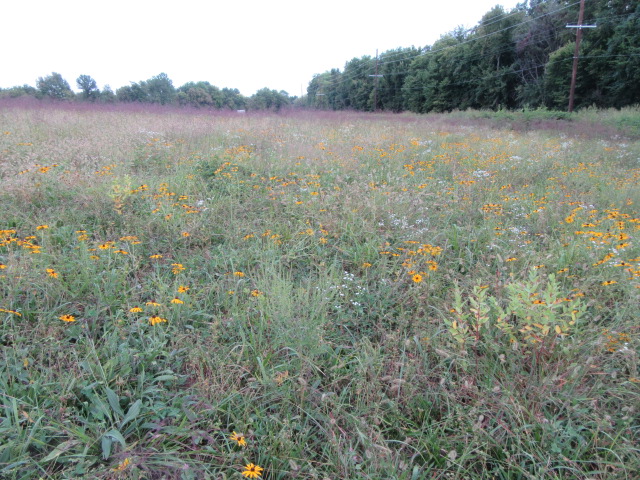
Rudbeckia hirta (Black-Eyed Susan) in the south hayfield on 9-17-22, #912-24.
Hello everyone! I hope this post finds you well. I have been working on a Euphorbia post since the last one, but it is proving somewhat complicated. So, I thought I would work on an easier one for now.
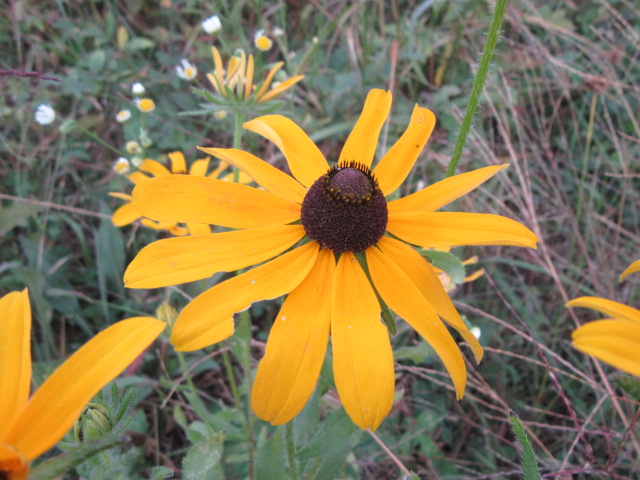
Rudbeckia hirta (Black-Eyed Susan) on 9-17-22, #912-26.
There are Rudbeckia hirta (Black-Eyed Susans) from one end of the farm to the other. You see them everywhere along highways, backroads, pastures, gardens, etc. Pretty much everyone knows what they are. For years, all the Black-Eyed Susans I have seen have been the basic orange-yellow flowers with dark brown discs (receptacles…) in the center. To be honest, I thought a Black-Eyed Susan was a Black-Eyed Susan. Once you see one, you have seen them all. Even so, I read in their descriptions they can have flowers with reddish markings on their petals and I have seen photos online but never in person.
On September 17, I went to the south hayfield to take photos of the Euphorbia nutans (Nodding Spurge) where I knew there were several colonies. Once I did that, I thought I would walk through the Black-Eyed Susans. I certainly didn’t have to look for them since 2/3 of the hayfield is covered with them. There are other wildflowers growing among them so it was no telling what I would find…
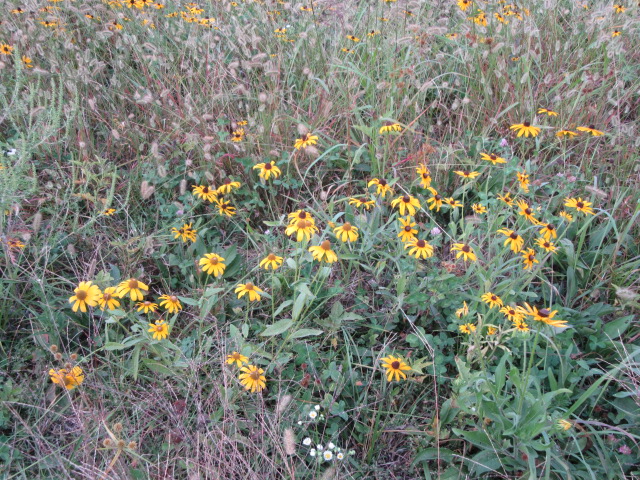
Rudbeckia hirta (Black-Eyed Susan) on 9-17-22, #912-25.
After I took several photos of the Euphorbia nutans, I walked about 20′ or so north and spotted something weird… Can you see the difference between the flowers on the right and left…
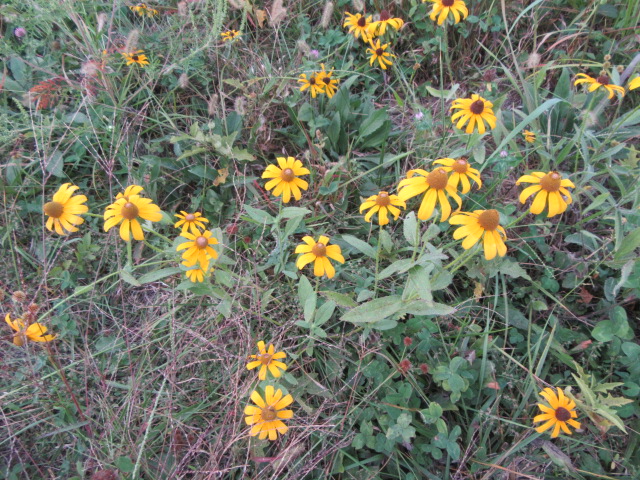
Rudbeckia hirta (Black-Eyed Susan) on 9-17-22, #912-30.
I have seen some weird things, and this was definitely one of the newest. Not exactly what I was hoping to find, but this was definitely interesting.
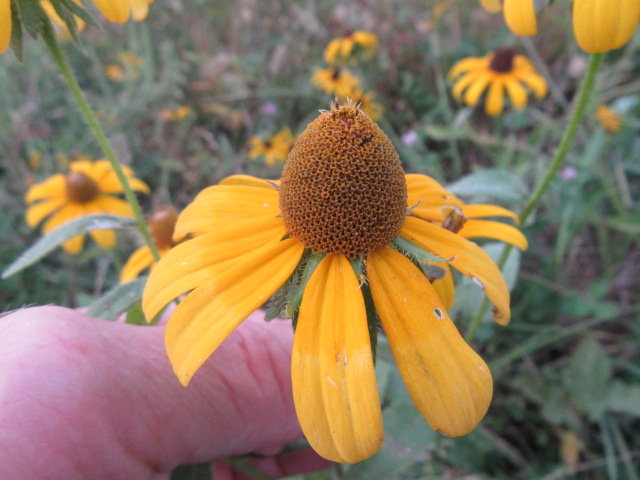
Rudbeckia hirta (Black-Eyed Susan) on 9-17-22, #912-32.
I had never seen Black-Eyed Susans with light brown receptacles… The disc “florets” are supposed to be dark purple to purplish-brown. The ray florets (petals) are also darker toward the center… I looked the plants over pretty good from top to bottom, and they are definitely Rudbeckia hirta… You never know since there are several species of Rudbeckia in Missouri. Maybe this is the Black-Eyed Susan’s idea of an albino…
I walked farther out…
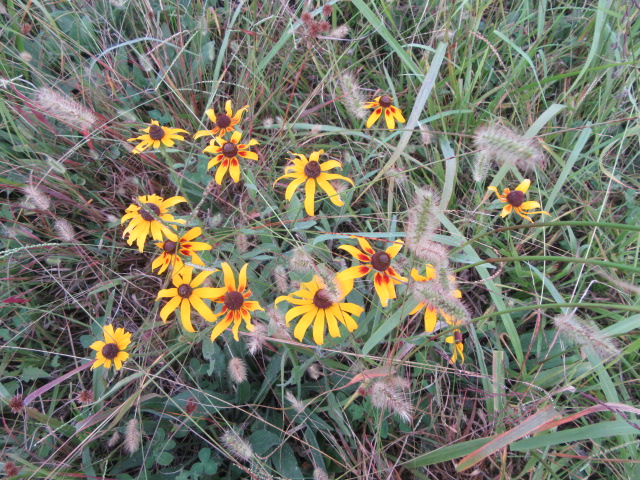
Rudbeckia hirta (Black-Eyed Susan) on 9-17-22, #912-33.
HA!!! Would you look at that! I had often wondered if larger colonies would have more variation, and perhaps this is proof of that. Hmmm… Maybe it is from inbreeding.
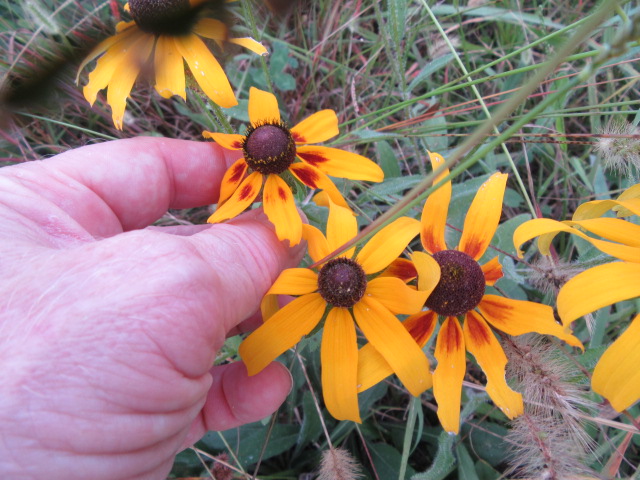
Rudbeckia hirta (Black-Eyed Susan) on 9-17-22, #912-34.
I was glad I finally found Black-Eyed Susans with reddish color on the petals.

Rudbeckia hirta (Black-Eyed Susan) on 9-17-22, #912-37.
Among the whole area, there were quite a few smaller colonies here and there with these two-one petals.
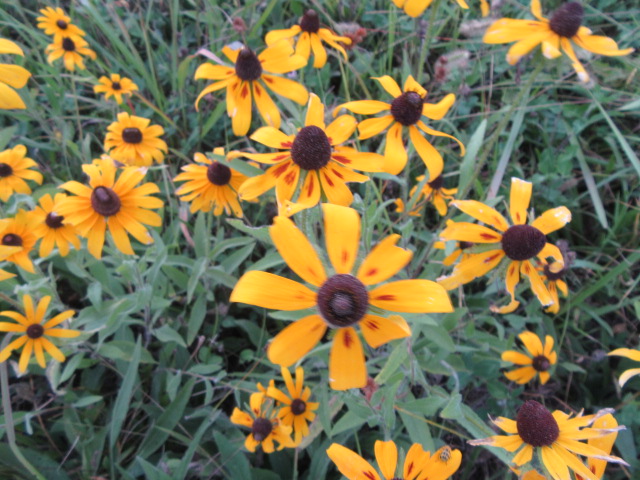
Rudbeckia hirta (Black-Eyed Susan) on 9-17-22, #912-38.
The colonies with the reddish markings usually were mixed with flowers with two-tone petals.
I am glad I walked out into the Black-Eyed Susans and found the different flowers. I must admit I was surprised.
I will continue working on the Euphorbia post and others at the same time. I am a little behind, but I guess that’s OK.
Until next time, be safe, stay positive, always be thankful, and GET DIRTY!
Until now it had never occurred to me that anyone had black-eyed Susans as wildflowers, as they are garden flowers to us and don’t grow wild. I really need to get out more and open my mind to all these possibilities. Great shots of the various varieties – just goes to show how much yhou can gain from looking at something ordinary in more detail. Fascinating.
LikeLiked by 1 person
Hello Simon! Native Black-Eyed Susans are quite common throughout North America. They are an introduced species where you live but I don’t know to what extent. It was very interesting to see the different color variations I hadn’t noticed before. You never know what you will find until you take a trip on the wildside. 🙂 Take care and thanks for the comment!
LikeLiked by 1 person
We have rudbeckias with red-striped leaves but they are a variety that breeds true rather than a natural variation. I suppose they started as a natural variation but the plant breeders got hold of them.
LikeLiked by 1 person
Yes. Various cultivars are used to make new cultivars that are better for home gardeners. They don’t have to “breed true” because they are perennial and the growers use tissue culture to produce more. Even in nature, the seeds from the flowers with the maroon markings will also produce plants without markings. Breeders/growers can use tissue culture to produce plants that will all have the coloration without using seeds.
LikeLike
It’s all very scientific these days. I planted blue alyssum a few years ago. The next year we had a lot of blue edged white flowers as the blue died out and the white, as usual proliferated. The year after – pure white again. Nature is a mystery to me.
LikeLiked by 1 person